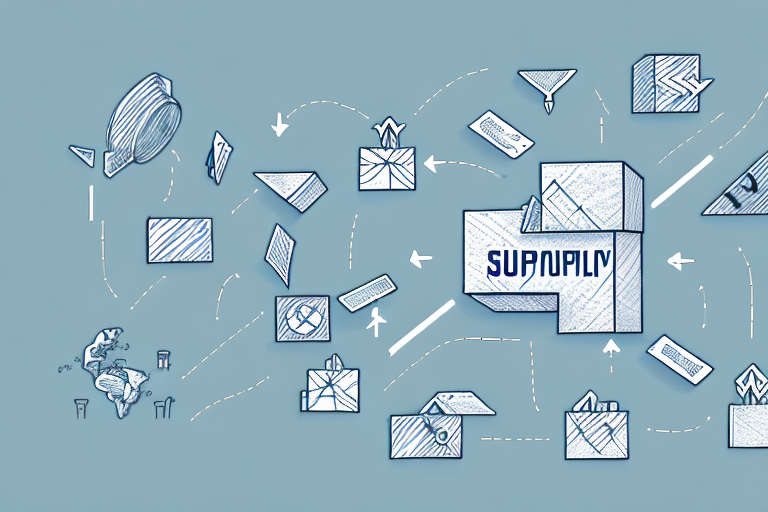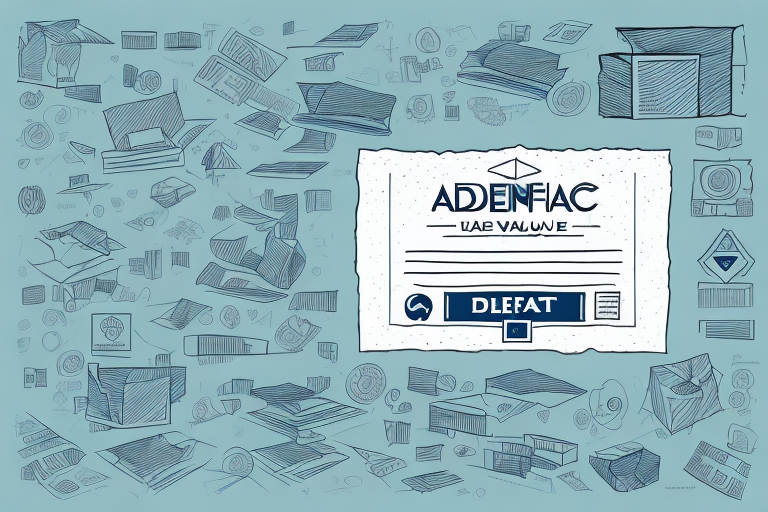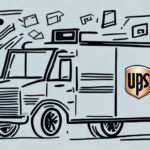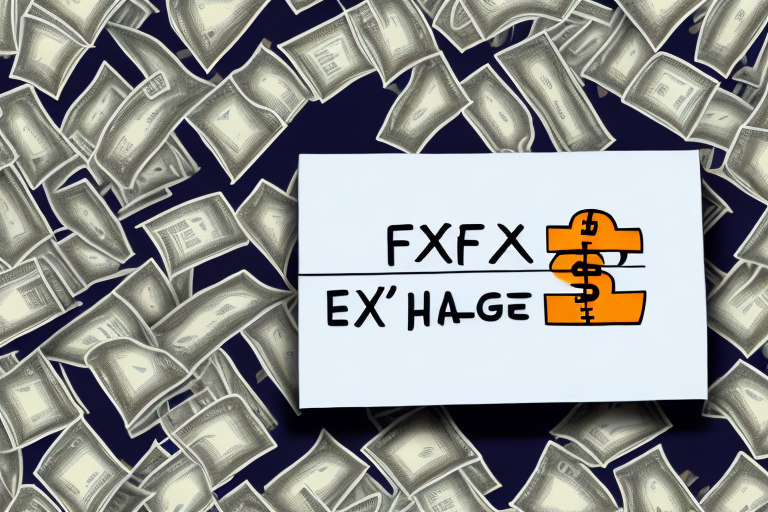Understanding Declared Value Coverage in Supply Chain Management
Supply chain management plays a critical role in the success of any business. One of the most important aspects of managing your supply chain is ensuring that your goods are protected during transportation. Declared value coverage is one of the most commonly used forms of protection in the transportation industry. In this article, we will discuss what declared value coverage is, why it is important, common myths surrounding it, factors to consider when choosing the right coverage for your business, and the benefits of investing in it. We will also explore how to file a claim, provide tips for negotiating better rates, highlight emerging trends in the industry, and present real-life examples of how businesses have benefited from declared value coverage.
What is Declared Value Coverage and How Does It Work in Supply Chain Management?
Declared value coverage is a form of protection offered by carriers during the transportation of goods. It is essentially an agreement between the carrier and the shipper that sets the maximum liability the carrier will have for the goods being transported. The value of the shipment is declared by the shipper, and the carrier charges a fee based on that declared value. In the event of loss or damage to the goods, the carrier will be liable for the declared value, up to the maximum amount of coverage purchased.
This coverage is crucial for mitigating the risk of loss or damage to goods during transportation, especially for high-value items. According to the ShipScience Supply Chain Risk Management Report 2023, businesses that invest in declared value coverage experience 30% fewer financial losses related to shipping incidents.
Shippers must carefully consider the value of their goods and the level of coverage required. Understanding the terms and conditions, including any exclusions or limitations, is essential to ensure adequate protection.
The Importance of Declared Value Coverage in Protecting Your Business
Declared value coverage is essential for protecting your business from financial losses due to damaged or lost goods during transportation. Without proper protection, businesses could face significant financial losses that might lead to bankruptcy or closure. This coverage also provides peace of mind, ensuring that your goods are protected and that you will be compensated if anything goes wrong during transit.
It's important to note that not all carriers automatically provide declared value coverage. Businesses must take responsibility for ensuring their goods are properly insured during transportation. Researching and comparing insurance options can help find the best coverage tailored to specific needs. Additionally, accurately declaring the value of goods is crucial for adequate coverage in the event of a loss.
Common Myths About Declared Value Coverage Debunked
Several myths surround declared value coverage, leading to misunderstandings. One common myth is that it is the same as insurance. While both provide protection, they are not identical. Insurance offers broader protection, covering various risks, whereas declared value coverage is specific to the value of the goods being transported.
Another myth is that carriers are automatically responsible for any loss or damage regardless of declared value coverage. In reality, carriers are only liable for the declared value up to the maximum amount of coverage purchased.
Additionally, some believe that declared value coverage is included in the shipping cost. In truth, it is an optional service that must be requested and paid for separately. Always review the terms and conditions to understand any limitations or exclusions that might affect your coverage.
Factors to Consider When Choosing the Right Declared Value Coverage for Your Business
Selecting the appropriate declared value coverage involves evaluating several factors:
- Type of Goods: Fragile or high-value items may require higher coverage.
- Value of Goods: Accurately declare the total value to ensure adequate protection.
- Mode of Transportation: Different modes (air, sea, land) may have varying risk levels.
- Carrier's Reputation: Choose carriers with a reliable track record.
- Cost of Coverage: Balance coverage benefits with affordability.
Additionally, consider the level of risk associated with transporting your goods. For instance, shipping perishable items may necessitate higher coverage to protect against spoilage or damage.
Understanding the potential impact of lost or damaged goods on your operations is also critical. For businesses relying heavily on certain products, higher coverage ensures better financial resilience.
The Benefits of Investing in Declared Value Coverage for Your Supply Chain
Investing in declared value coverage offers multiple benefits:
- Financial Protection: Covers the value of goods in case of loss or damage.
- Peace of Mind: Reduces anxiety over potential shipping incidents.
- Reduced Liability: Limits the financial responsibility of businesses.
- Improved Carrier Relationships: Demonstrates professionalism and reliability.
Moreover, declared value coverage enables businesses to recover quickly from any transportation-related losses. By receiving compensation for the full declared value, businesses can replace or repair damaged items without significant financial strain. This coverage can also provide a competitive advantage, showcasing a commitment to robust supply chain management.
How to File a Claim Under Declared Value Coverage: A Step-by-Step Guide
Filing a claim under declared value coverage involves the following steps:
- Contact the Carrier: Inform them of the loss or damage as soon as possible.
- Complete Necessary Forms: The carrier will provide the required claim forms.
- Provide Documentation: Submit the bill of lading, invoice, and any other relevant documents.
- Carrier Review: The carrier will assess the claim and verify the details.
- Receive Compensation: If approved, compensation based on the declared value and coverage limits will be issued.
Be aware of the carrier's specific limitations and timeframes for filing claims. Acting promptly increases the likelihood of a successful claim. Understanding the process thoroughly ensures preparedness for unforeseen transportation issues.
Tips for Negotiating Better Rates on Declared Value Coverage with Your Carrier
Businesses can negotiate better rates on declared value coverage by implementing the following strategies:
- Seek Multiple Quotes: Comparing rates from different carriers can highlight competitive offers.
- Bundle Services: Combining transportation services may lead to discounted rates.
- Understand Pricing Structures: Knowing how carriers price coverage helps in negotiations.
- Leverage Shipment Volume: Higher shipping volumes can qualify for bulk discounts.
- Consider Long-Term Contracts: Committing to longer agreements may secure lower rates.
Additionally, carriers might offer extra services like advanced tracking and insurance options. Evaluating these can influence the overall cost and value of your transportation agreements.
The Future of Declared Value Coverage in Supply Chain Management: Emerging Trends to Watch Out For
Declared value coverage is evolving alongside advancements in technology and shifts in the supply chain industry. Key emerging trends include:
- Blockchain Integration: Enhances security and transparency in tracking goods.
- Increased Automation: Streamlines the claims process and coverage management.
- Advanced Tracking Technologies: Provides real-time monitoring of shipments, reducing risks.
- Focus on Sustainability: Development of coverage options that support eco-friendly transportation and packaging.
As industries prioritize sustainability, declared value coverage is likely to adapt, offering solutions that align with environmentally conscious practices. Staying abreast of these trends ensures that businesses can leverage the latest advancements for improved supply chain resilience.
Case Studies: Real-Life Examples of How Declared Value Coverage Saved Businesses from Losses in Supply Chain Management
Numerous cases demonstrate the value of declared value coverage:
- Thief Compensation: A business whose goods were stolen during transit received full compensation based on the declared value, preventing significant financial loss.
- Damage Recovery: A shipment damaged in transit was fully compensated, allowing the business to replace products without depleting its financial resources.
- Natural Disaster Mitigation: Goods damaged by a natural disaster en route were covered, enabling the business to recover and continue operations smoothly.
- Maintaining Reputation: A company compensated its customers for lost goods promptly, maintaining customer satisfaction and loyalty despite the shipping incident.
These examples underscore the importance of comprehensive declared value coverage in protecting businesses from various transportation-related risks. Proper coverage not only safeguards financial interests but also helps maintain operational continuity and customer trust.
In conclusion, declared value coverage is an essential aspect of supply chain management that provides critical financial protection and peace of mind. By understanding its importance, debunking common myths, and carefully selecting the right coverage, businesses can effectively mitigate risks associated with transporting goods. Additionally, staying informed about emerging trends and adopting best practices in claims and negotiations can enhance supply chain resilience and overall business success.
For more information on supply chain management and protection strategies, visit ShipScience.






















